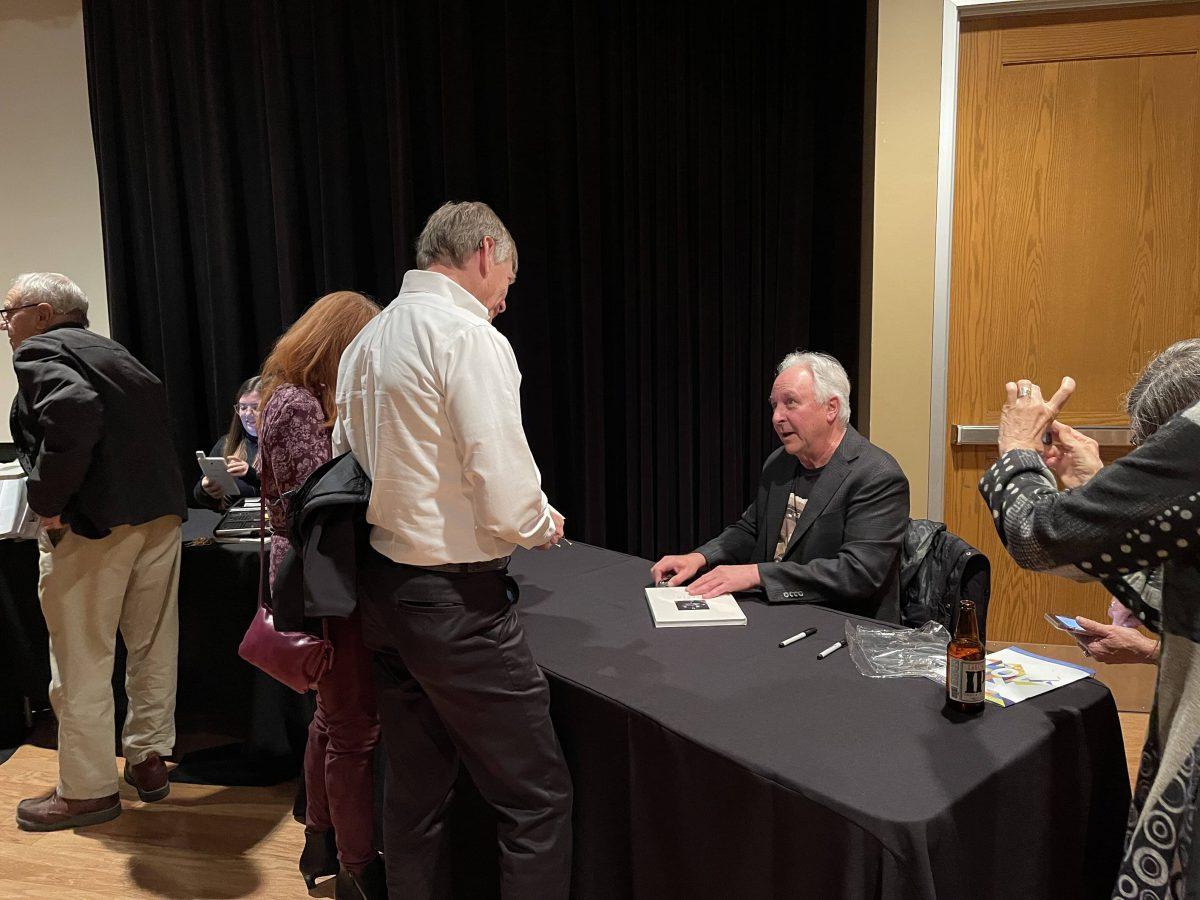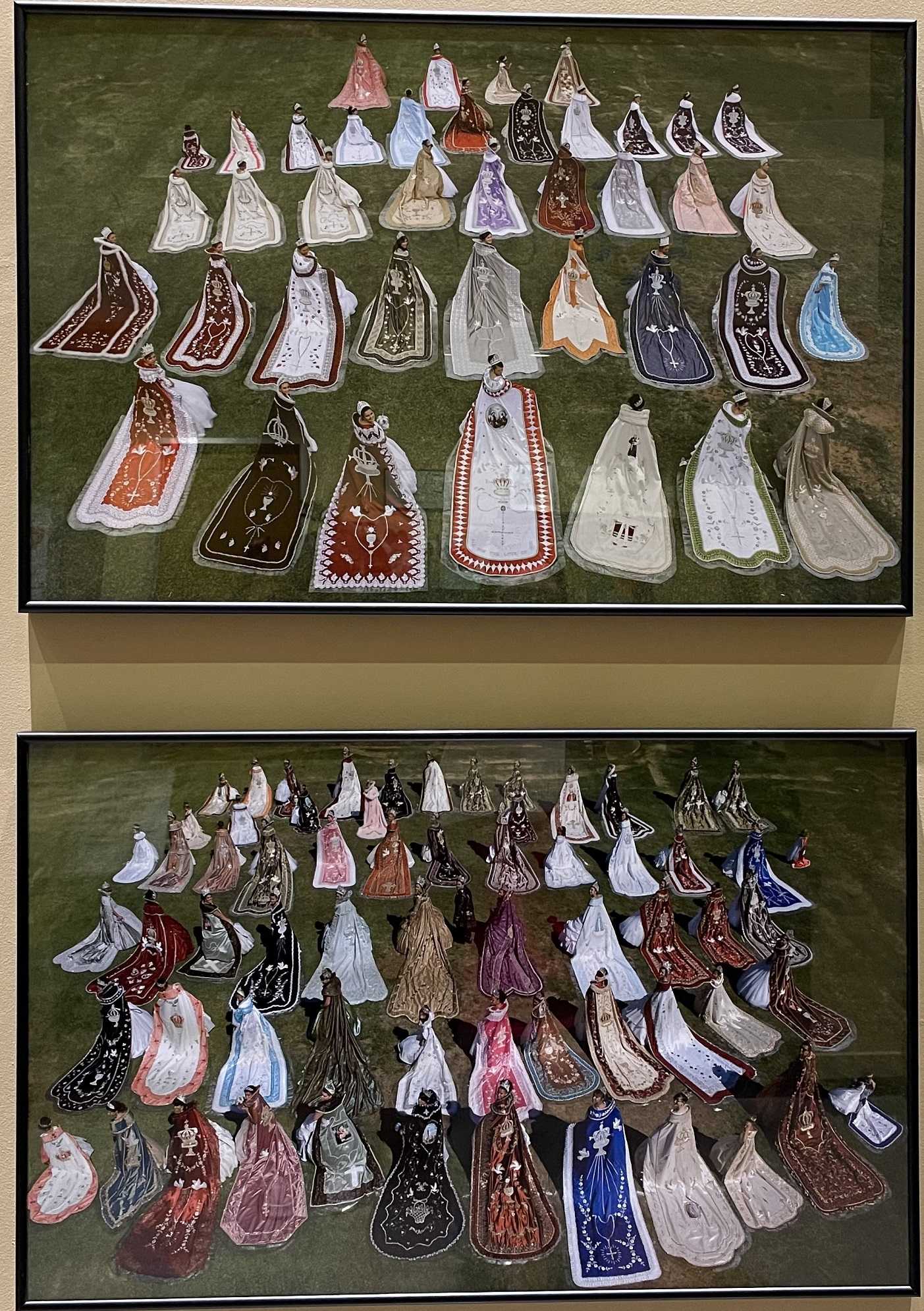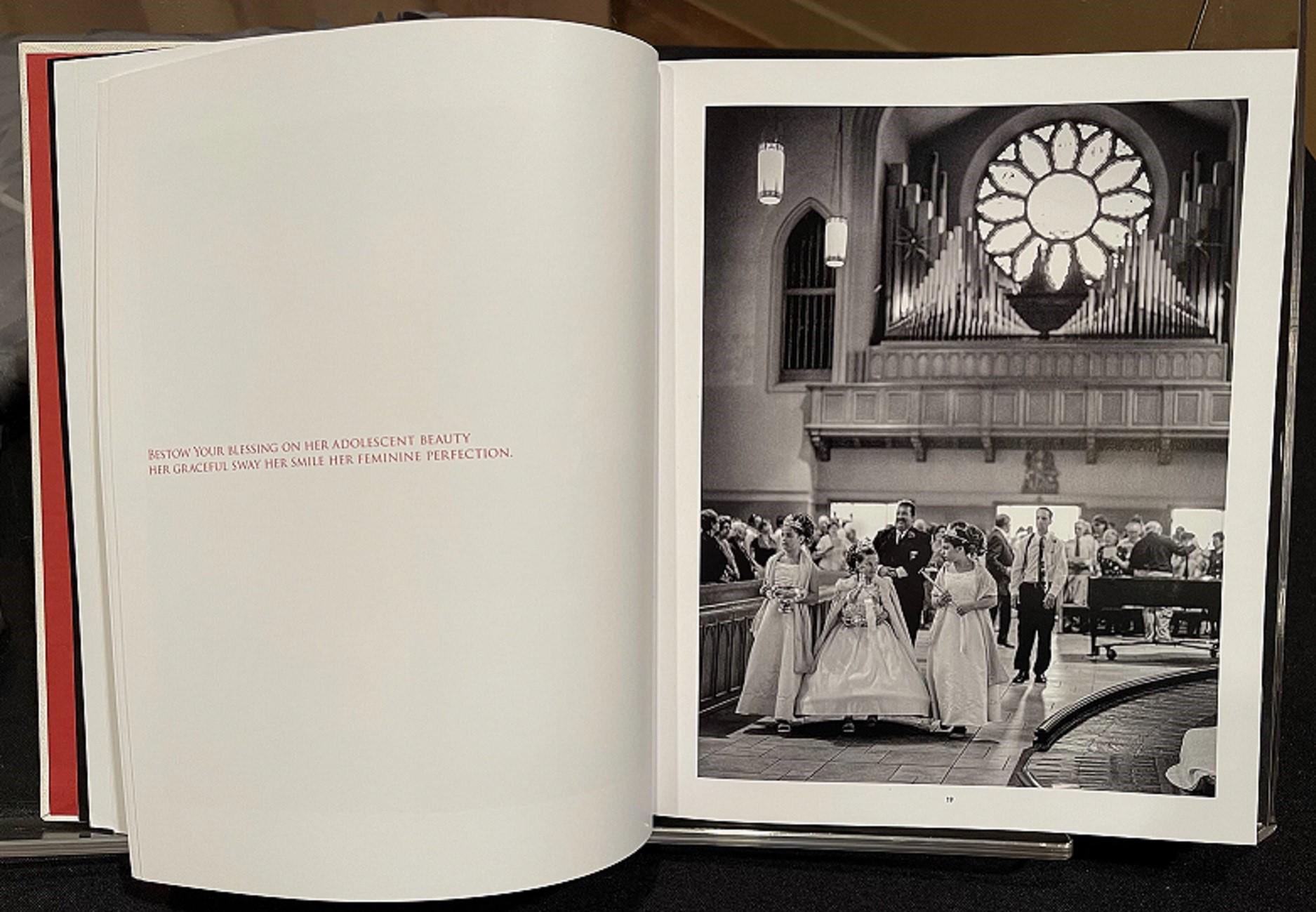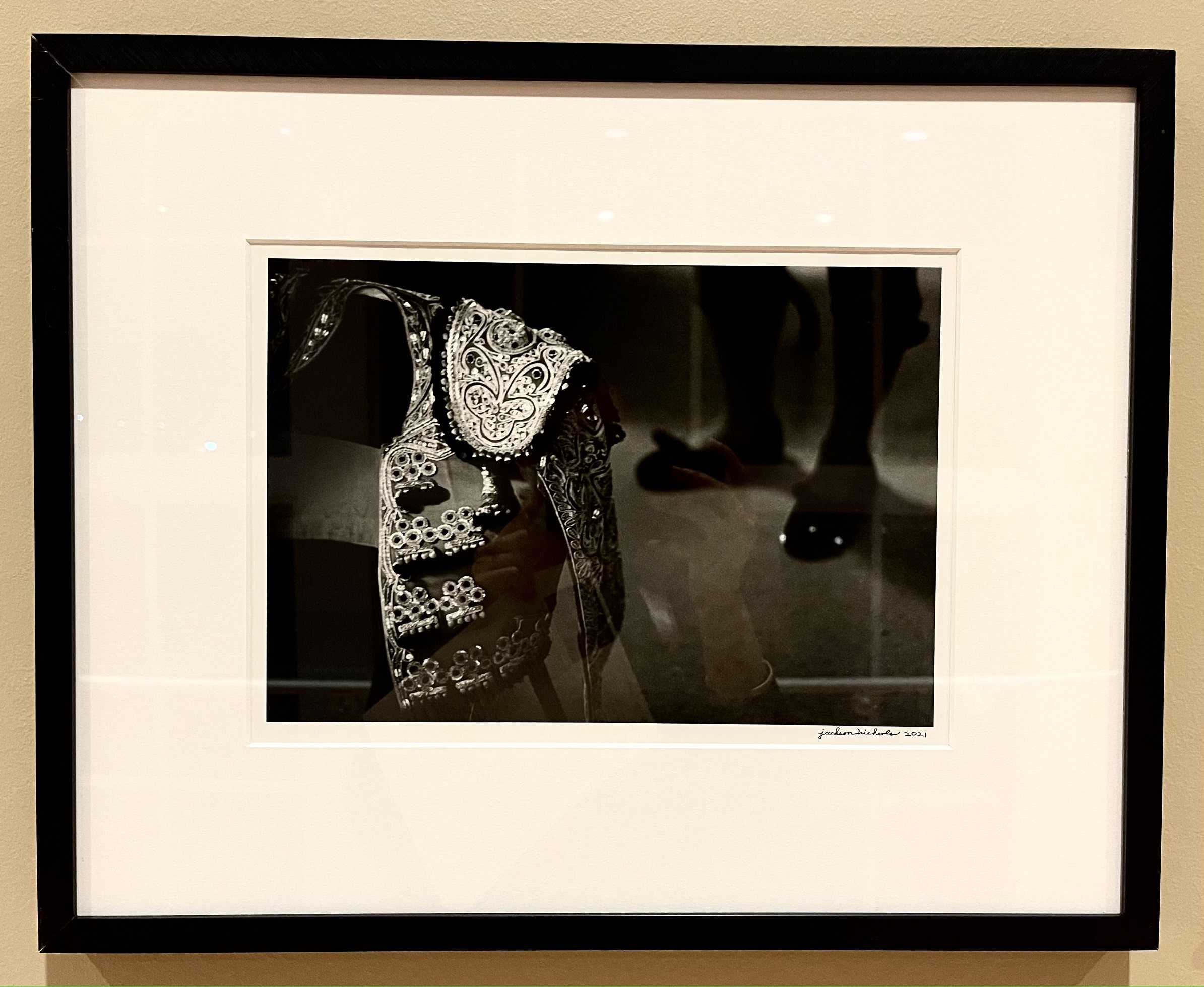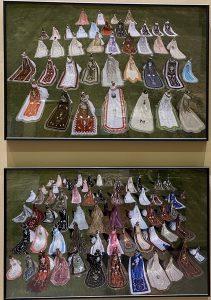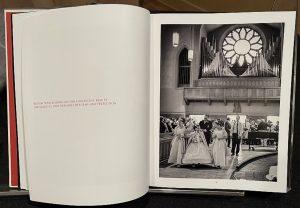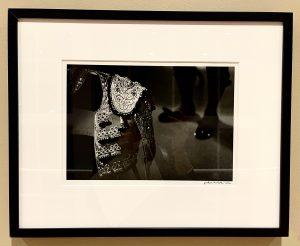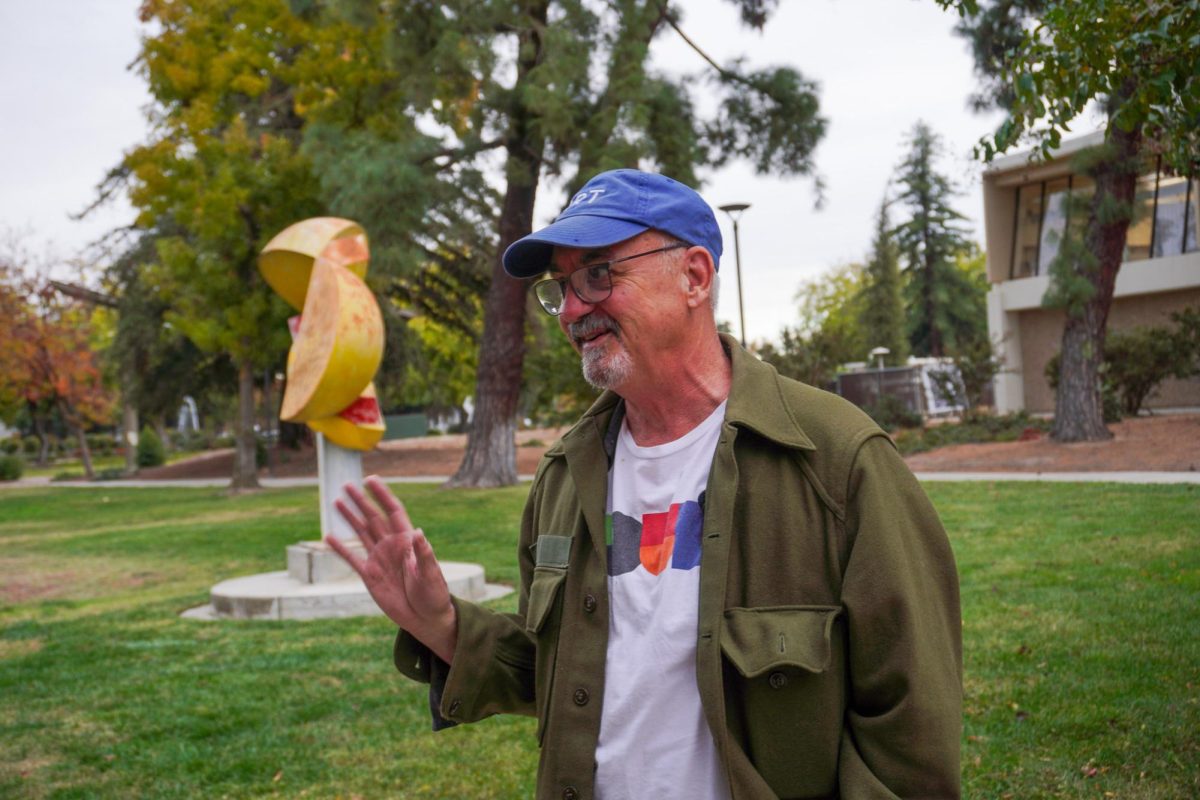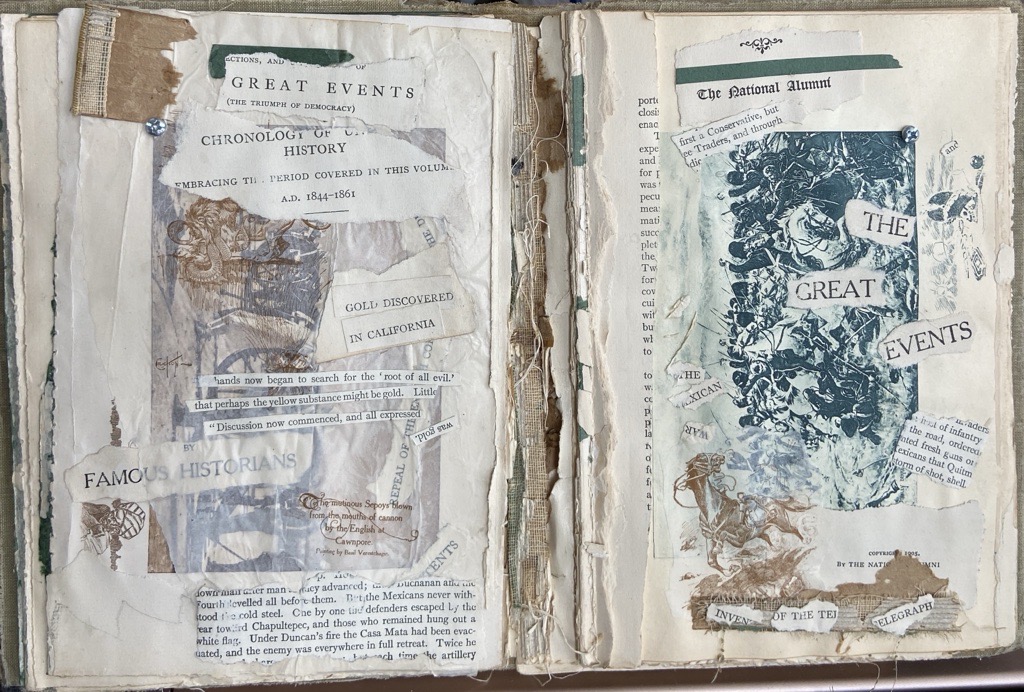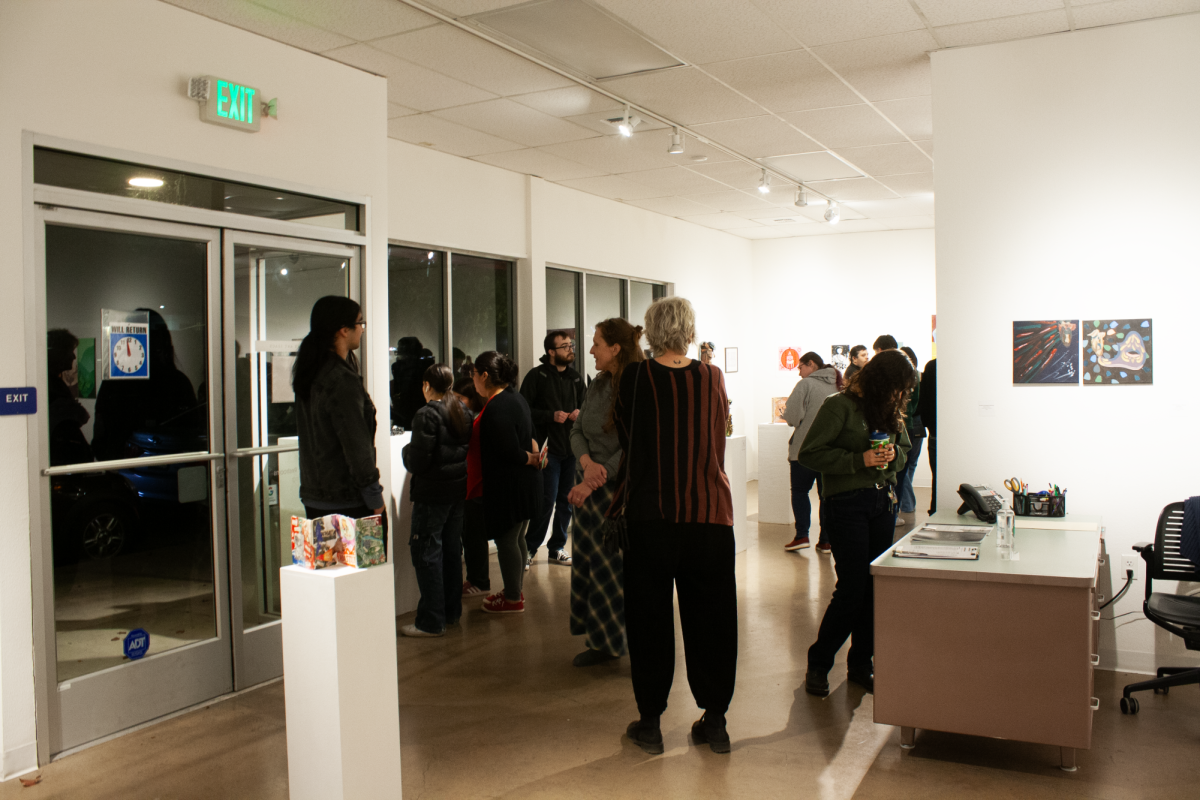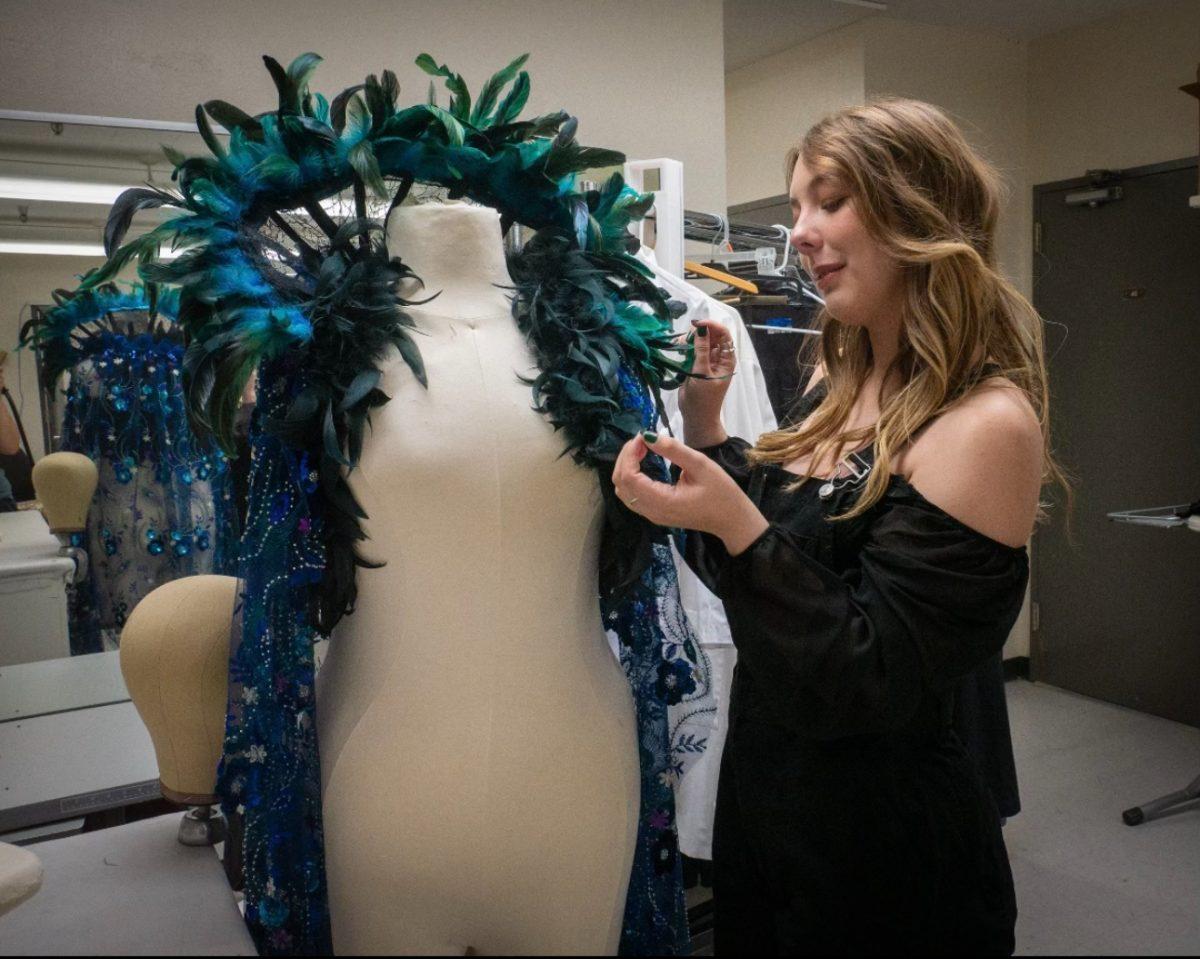Jackson Nichols is a freelance photographer and documentarian exploring identity through culture. The majority of his work is made on black and white film, using traditional 35mm and medium format cameras, printing his own silver gelatin prints from his home darkroom in Fremont. On March 3, the Carnegie Arts Center in Turlock showcased over 60 pieces of Nichols’ work, held a screening of his new bullfighting documentary, and held a signing for his new book, “Festa.”
“This exhibit is the culmination of 30 years of photographing Portuguese festas in Northern California,” Nichols said.
He also explained that it is a tribute to his wife, Dianna Fernandez-Nichols, who is third generation Portuguese and a native of the Mission San Jose District of Fremont. She attended festas when she was young and even began writing her Master Thesis in Cultural Anthropology on the festas as a form of cultural identity.
“She would write about the festas and I would photograph them,” Nichols explained.
After earning her master’s degree, Dianna stopped attending festas to focus on raising the family, but Jackson never stopped because he was fascinated by the pageantry and ritual surrounding the events.
“I fell in love with Portuguese culture and feared the uniqueness of these cultural events could not survive the changing demographic of the Bay Area,” Nichols said.
The photographs featured in his latest show in Turlock were taken in Northern California between the years 1990 and 2021.Nichols explained that when he visited the festas, he felt like he was visiting another country because of the rich culture. He actually started photographing the festas without any intention of what to do with those photographs other than just being interested in the events.
Nevertheless, he ended up with so many photographs, he decided to put everything together in his book, “Festa – A Celebration of Faith,” which is being promoted through a collaboration with the Carnegie Arts Center.
The book tells the story of Portuguese festas through poetry and photography. The poetry featured was written by three Portuguese poets. Nichols complimented the poems with a selection of his white and black photographs taken at festas. He captured events, both unexpected and planned, that transcend the commonplace to reveal the humor and humanity of the festa participants. He explained that the goal of the book is to bring awareness of the unique Portuguese-California culture and traditions to the greater community.
The book has 140 pages with 70 Black and White photographs. He explained that it took him about four months to finish it as he had about 10,000 photographs to pick from.
For the past decade Jackson has also been involved in documenting stories using video. In 2015, he documented the formation of a new forcado group: Grupo Forcados Amadores Luso Americanos. Jackson explained that the bloodless bullfight is a part of the Portuguese festas.
In 2010, Jackson went to see his first daytime bullfight, as most in California happen during Monday nights. After seeing the first bloodless bullfight, he fell in love with it and later on he talked to a couple of the group members and decided to do a documentary.
The 40 minute video which was shown during the event was the Luso Americanos group; he followed the group around for a full year. The documentary showcased their recruitment and training process and their bullfights in Stevinson Arena. It is a behind the scenes look at the art and strategy involved in being a forcado. Nichols also mentioned that because he was making a video of this group, he was invited to travel with them to the city of Angra, Isla Terceira, Azores, to document their participation in the invitational bullfight during the Sanjoaninas celebration.
Michael Lopes, who is captain and co-founder of Luso Americanos group, explained that they started their own group after leaving another one in 2014. Lopes retired in October of 2021 as he believes that it is time for the new generation to take on the responsibilities of bullfighting. Lopes explained that the bullfight sessions last from the month of April to October in California because they run with the Portuguese religious festivals.
In his career, Lopes successfully grabbed 58 bulls upfront. He pointed out that they don’t kill the bull after the fight like they do in Spain and Portugal, instead forcados come out and grab the bull to signify that the fight has ended.
“I am so grateful for the many years that I have been able to attend and document these events and for the friends I have made along the way,” Nichols said.
Lisa McDermott, director of Carnegie Arts Center, said that it was important for them to connect with the community as Turlock is rich with Portuguese culture. She explained that the center had done small events in the past on Portuguese culture and art, but not of this magnitude.
For additional information on Jackson Nichols and his art, head to his official website at www.jnicholsphotos.com.

